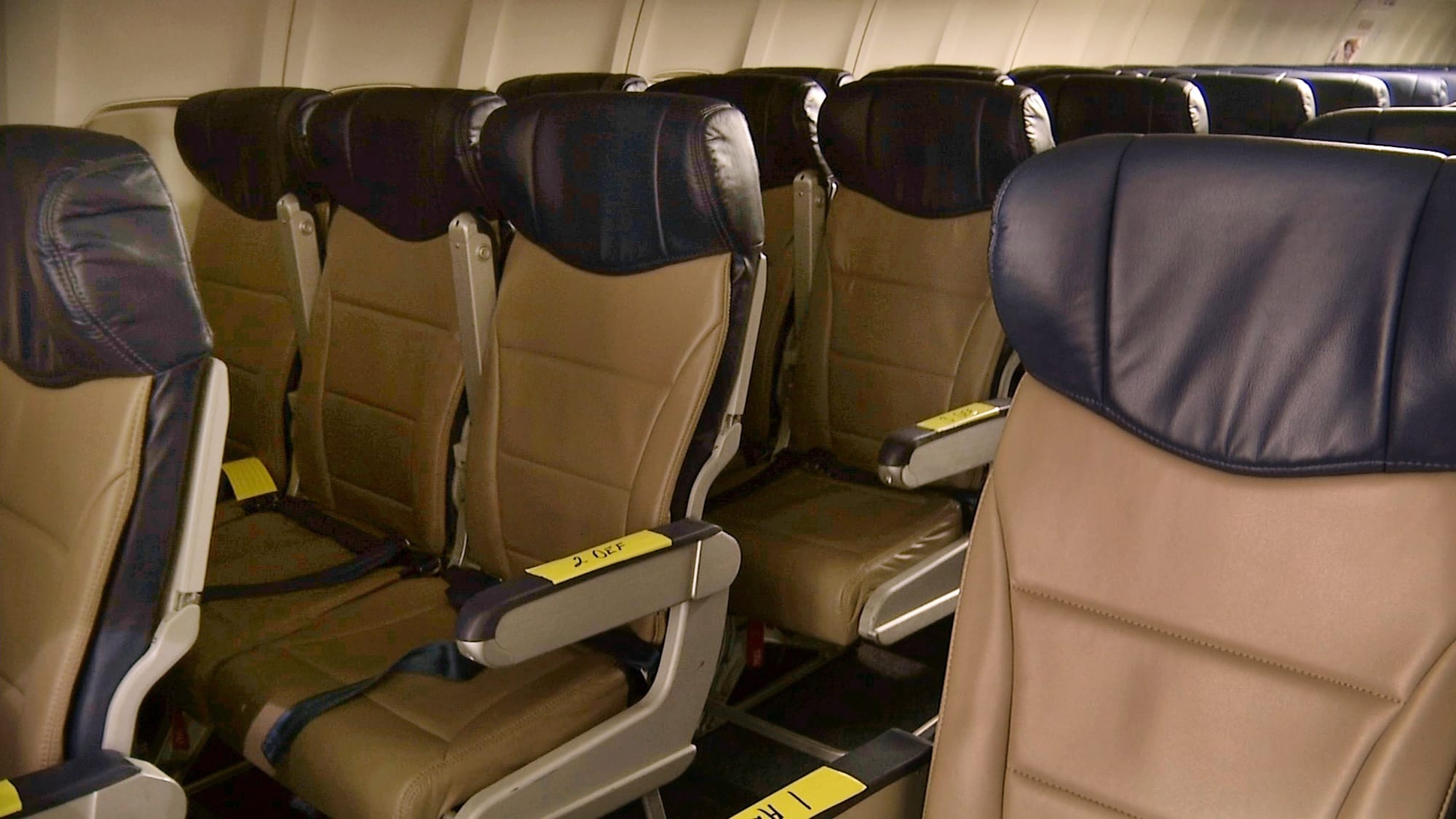NEW YORK — Squeezed into tighter and tighter spaces, airline passengers appear to be rebelling, taking their frustrations out on other fliers.
Three U.S. flights made unscheduled landings in the past eight days after passengers got into fights over the ability to recline their seats. Disputes over a tiny bit of personal space might seem petty, but for passengers whose knees are already banging into tray tables, every inch counts.
“Seats are getting closer together,” says Sara Nelson, president of the Association of Flight Attendants, which represents 60,000 flight attendants at 19 airlines. “We have to de-escalate conflict all the time.”
There are fights over overhead bin space, legroom and where to put winter coats.
“We haven’t hit the end of it,” Nelson says. “The conditions continue to march in a direction that will lead to more and more conflict.”
Airlines today are juggling terror warnings in Britain, the Ebola outbreak in Africa and an Icelandic volcano erupting and threatening to close down European airspace. Yet, the issue of disruptive passengers has captured the world’s attention.
It’s getting to the point where the pre-flight safety videos need an additional warning: Be nice to your neighbor.
The International Air Transport Association calls unruly passengers “an escalating problem,” saying there was one incident for every 1,300 flights in the past three years. The trade group would not share detailed historical data to back up the assertion that this is a growing problem.
Today’s flying experience is far from glamorous. Passengers wait in long lines for security screening, push and shove at the gate to be first on board, and then fight for the limited overhead bin space. They are already agitated by the time they arrive at their row and see how cramped it is.
To boost their profits, airlines have been adding more rows of seats to planes in the past few years.
Southwest and United both took away one inch from each row on certain jets to make room for six more seats. American is increasing the number of seats on its Boeing 737-800s from 150 to 160. Delta installed new, smaller toilets in its 737-900s, enabling it to squeeze in an extra four seats. And to make room for a first-class cabin with lie-flat beds on its transcontinental flights, JetBlue reduced the distance between coach seats by one inch.
Airlines say passengers won’t notice because the seats are being redesigned to create a sense of more space. Southwest’s seats have thinner seatback magazine pockets, Alaska Airlines shrank the size of tray tables, and United moved the magazine pocket, getting it away from passengers’ knees.
But passengers aren’t just losing legroom; they’re losing elbow room.
Airlines sold 84 percent of their seats on domestic flights so far this year, up from 81 percent five years ago and 74 percent a decade ago, according to the Bureau of Transportation Statistics. That means there are fewer and fewer empty middle seats on which passengers can spread out.



